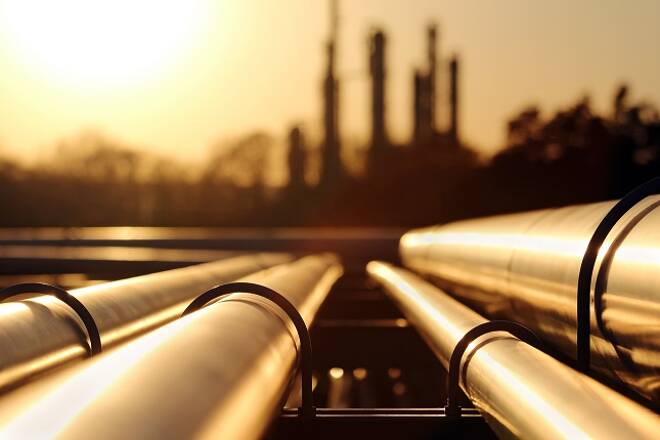Advertisement
Advertisement
Natural Gas Consolidates After Breakout Monday
By:
Natural gas prices edged lower on Tuesday after breaking out above short-term trend line resistance on Monday. The cold weather that is expected to cover
Natural gas prices edged lower on Tuesday after breaking out above short-term trend line resistance on Monday. The cold weather that is expected to cover most of the east coast for the next 6-10 days is expected to melt away bringing warm weather.
Technicals
Natural gas prices tests support below the breakout trend line and rebounded near the 10-day moving average at 2.70. Target resistance is seen near the March highs at 2.80. Momentum is positive as the MACD (moving average convergence divergence) histogram prints in the black with an upward sloping trajectory which points to higher prices.
Natural Gas Production Increased
U.S. dry natural gas production averaged 73.6 billion cubic feet per day in 2017. EIA forecasts dry natural gas production will average 81.1 Bcf per day in 2018, establishing a new record. EIA expects natural gas production will rise by 1.7 Bcf per day in 2019.
Growing U.S. natural gas production is expected to support both growing domestic consumption and increasing natural gas exports in the forecast. EIA forecasts U.S. consumption of natural gas to increase by 4.2 Bcf per day in 2018 and by 0.7 Bcf per day in 2019, with electric power generation the leading contributor to this increase. EIA also expects net natural gas exports to increase from 0.4 Bcf per day in 2017 to an annual average of 2.2 Bcf per day in 2018 and 4.4 Bcf per day in 2019.
EIA estimates that natural gas inventories ended March, typically considered the end of the winter heating season, at almost 1.4 trillion cubic feet, which was 19% lower than the previous five-year average. Based on a forecast of rising production, EIA forecasts that natural gas inventories will increase by more than the five-year average rate of growth during the injection season (April–October) to reach almost 3.8 Tcf on October 31, which would be 2% lower than the previous five-year average.
About the Author
David Beckerauthor
David Becker focuses his attention on various consulting and portfolio management activities at Fortuity LLC, where he currently provides oversight for a multimillion-dollar portfolio consisting of commodities, debt, equities, real estate, and more.
Did you find this article useful?
Latest news and analysis
Advertisement
